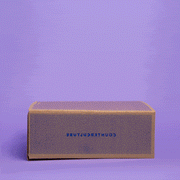The Ferrufino family acquired Finca Aurora in 2004. Not far from the picturesque city of Matagalpa, the farm is one of the largest we work with anywhere in the world, totaling more than 250 hectares. The Ferrufino family’s diverse backgrounds in medicine, business, and agronomy, as well as the scale of their operation, have resulted in research innovations and sustainable farming practices that are often unattainable at smallholder farms where most specialty coffee originates. Finca Aurora is fully carbon neutral, using only renewable energy sources. That's especially impressive given that the farm includes a fully operational dry mill which cleans, sorts, and packages coffees before they are shipped to their final destination. More than half of the farm’s property remains uncultivated, creating natural reserves for local flora and fauna.
The farm is primarily planted with Icatú and Parainema varieties, selected for their balance of high yields, disease resistance, and cup profile. Finca Aurora also produces other varieties in smaller volumes, ranging from more traditional to newly developed varieties from Costa Rica and Brazil, among others. Each season, the farm’s staff collects seeds from particularly healthy trees and replants sections of the farm with them, utilizing localized adaptations which occur naturally over time. One such adaptation is a dwarf version of Java that the Ferrufinos selected for its higher yield and greater resistance to Coffee Leaf Rust compared to the taller, traditional Java variety commonly found in Nicaragua. They’ve dubbed the mutation “Java Enano.”
Finca Aurora’s quality control manager, Zuzana Černá, a transplant from the Czech Republic and an accomplished coffee professional, is always tinkering with various processing techniques with a recent focus on anaerobic processing. The coffee from this lot was harvested ripe, floated to remove any underdeveloped or damaged cherry, then depulped and placed in sealed tanks to ferment for 60 hours before going out to African-style raised beds for drying. Paired with the variety’s natural sweetness and delicate flavors, this anaerobic process yields flavors faintly reminiscent of its relatives from the western highlands of Ethiopia.
![]()
![]()
![]()
![]()
![]()
![]()
![]()
![]()











